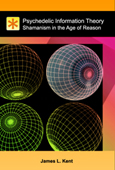
References
The continuous Wagon Wheel Illusion is object-based
VanRullen, Rufin; Vision Research Volume 46, Issue 24, November 2006, Pages 4091-4095.
The occurrence of perceived reversed motion while observers view a periodic, continuously moving stimulus (the “continuous Wagon Wheel Illusion”) has been taken as evidence that some aspects of motion perception rely on discrete sampling of visual information. The spatial extent of this sampling is currently under debate. When two separate motion stimuli are viewed simultaneously, the illusion of reversed motion rarely occurs for both objects together: this rules out global sampling of the visual field. The same result holds when the objects are superimposed by transparency: this argues against location-based sampling. Here we show that the sampling is in fact object-based: we use a rotating ring stimulus split in two halves. When the two halves move in opposite directions, appearing to belong to separate objects, perceptual reversals occur in either half at a time, but rarely in both. When the two halves physically move in compatible directions, they generally appear to reverse simultaneously: the illusion keeps the perceptual object united. Rather than the local low-level properties of the motion stimulus (which are comparable in both cases), it is thus the high-level organization of the scene that determines the extent of perceived motion reversals. These results imply that the continuous Wagon Wheel Illusion, and any discrete perceptual sampling that may cause it, is restricted to the object of our attention.
Web Resource: dx.doi.org
Keywords: discrete processing, attention, motion perception, Illusion, Object-based, oscillation, adaptation, motion aftereffect
|
This reference is included in the following Listings: |
